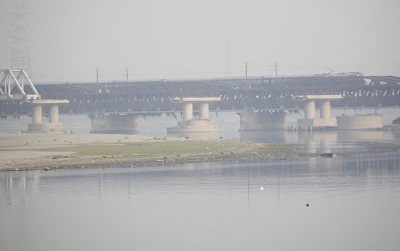New Delhi, (Asian independent) For the second straight day, the national capital’s air quality continued be “very poor” with the overall Air Quality Index (AQI) reaching 303 on Monday evening, according to data from the System of Air Quality and Weather Forecasting And Research (SAFAR).
In Dhirpur, the AQI plunged into a “severe” category at 327.
AQI between zero and 50 is considered “good”, 51 and 100 “satisfactory”, 101 and 200 “moderate”, 201 and 300 “poor”, 301 and 400 “very poor”, and 401 and 500 “severe”.
In Pusa, it was 242, falling under “poor”category.
At Lodhi Road, the AQI with PM 2.5 concentration was at 273, also coming under the “poor” category and the PM 10 stood at 163 under the “moderate” category.
Besides, the PM 2.5 was at 306 or “very poor” category at IIT Delhi station, while the PM 10 reached 172, in the “moderate” category.
Mathura Road was under “moderate” category with PM 2.5 at 173 with PM 10 concentration at 167.
According to SAFAR, the air quality of the city is likely to deteriorate further under “very poor” category with PM 2.5 reaching 313 and the PM 10 concentration at 191 “under moderate” category on Tuesday morning.
Meanwhile, with deteriorating AQI, Delhi Environment Minister Gopal Rai on Monday expressed his displeasure in a letter to Chief Minister Arvind Kejriwal, over the absence of the Chief Secretary, the DPCC Chairman, and the Transport Commissioner from a crucial meeting to tackle the worsening rising air quality in the national Capital.
Rai also requested Kejriwal to convene a National Capital Civil Services (NCCS) meeting and appoint officials who are serious about tackling the problem of pollution in Delhi.
The Minister had called the meeting to implement the Commission for Air Quality Management (CAQM) mandated Graded Response Action Plan (GRAP) 2 rules in the city, but the three top officers were absent.
Rai also said that there are 13 pollution hotspots in Delhi. “Today, eight other points, including Shadipur, Mandir Marg, Patparganj, Sonia Vihar and Moti Bagh witnessed AQI levels above 300 due to local reasons. Special teams will be deputed here to identify and inspect local sources of pollution there,” he said.
Rai also said that the government has additionally opted to employ dust suppressant powder as a means to counter dust pollution within the city. “The cold has started increasing in Delhi and speed of the wind has decreased, this may result in an increase in pollution… The particulate matter is staying near the ground. The second phase of GRAP has been implemented in Delhi.
“The weather is not in our hands but the sources need to be controlled… GRAP 2 is mainly about cleaning and water sprinkling etc… Frequency of buses and trains would be increased,” the minster said.








